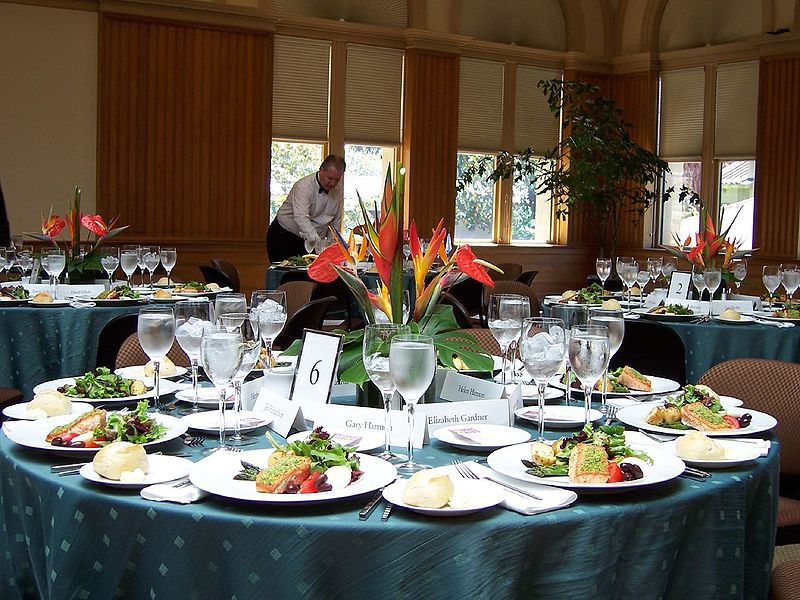It’s the hot potato at many weddings but a necessary evil. The seating plan for the meal can take a lot of effort to produce and even the best laid plans can lead to upset and disappointment. It is almost impossible to keep everybody happy but there are steps you can take to minimise potential issues.
You may question the need for a seating plan in the first place but not having one can result in an unseemly rush for the tables, guests being separated from their friends and family, people sitting with strangers and delays to the meal. Surveys have shown that wedding guests generally prefer to be allocated their place so a seating plan is usually the best way forward. Here are some tips on how to achieve the best plan.
- First decide whether to allocate seats or just the tables. If you have gender specific favours or guests with special food requirements it is best to assign seats. If you don’t you will have people with the wrong gifts and servers will find it difficult to locate those who have ordered special meals.
- Identify guests with special needs first and seat them appropriately. The hard of hearing need to be near the top table and elderly and disabled guests require easy access.
- Significant guests like very close family and friends and the parents of the bridesmaids should be seated close to the top table.
- Next look at your guest list to see if there are any people who really do not get on or if there are any potentially embarrassing situations like ex partners. Allocate these people to separate tables.
- Most people will want to be seated with a group they know so try to do this as far as possible. There has been a tradition for mixing things up but this usually leads to dissatisfaction.
- There will always be some people who know few or none of the other guests. If they do know someone else make sure they are on their table. If they don’t then add them to a group of a similar age or with interests in common.
- When placing people have a think about their personalities, ages and interests to arrive at tables where the guests are likely to get on. It is no good seating a couple of bohemian teenage friends sporting tattoos and body piercings next to your elderly grandfather in his hand knit. They won’t have anything to talk about and are likely to annoy each other!
- You will likely find that you have a few guests who don’t seem to fit anywhere. Don’t be tempted to just lump these people together on one table. Revisit your plan and see if you can find a suitable place by juggling things around a bit.
- Once you have finished your first stab take a good look at your plan table by table to see if there are any groupings which don’t work. You may have to make several amendments before you resolve all of the issues.
- Try to avoid ending up with one table which has noticeably fewer guests than the others. This can look awkward and will make the guests concerned feel like afterthoughts. If necessary reduce the numbers by one or two on a couple of other tables to supplement the shortfall.
However hard you try you will probably never achieve the perfect result but the more care and attention you devote to the task the happier the big day will be. When your plan is complete you may still have concerns about how some of your guests will react so if you think there is an issue talk to the people concerned in advance to sound them out. You may have to make last minute changes anyway as people drop out, decide to come after all or split up with their partners. The final draft may not be ready until late proceedings but once it is done stop worrying. What will be will be!
Byline
Article by Sally Stacey

